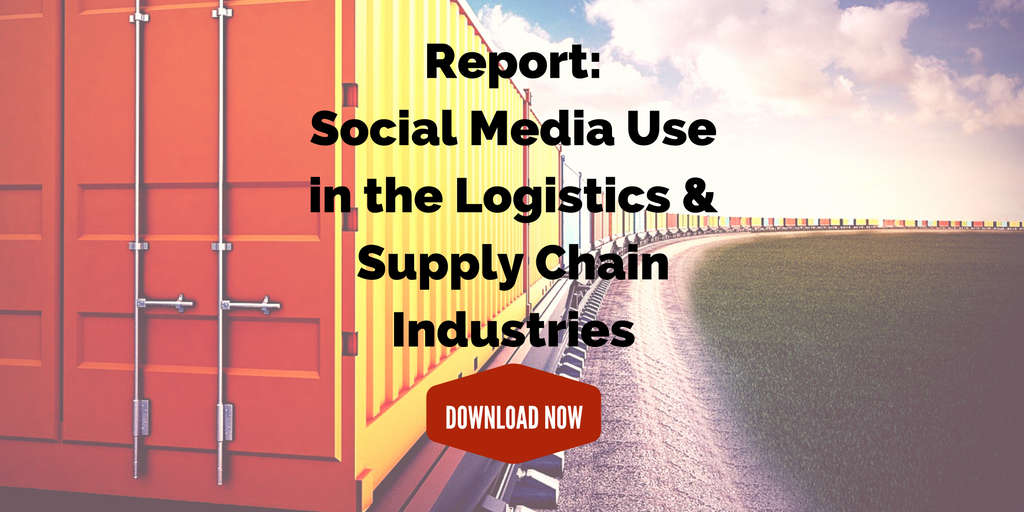
by Fronetics | Mar 7, 2017 | Blog, Logistics, Marketing, Social Media, Supply Chain
Social listening can help your business gain valuable insight about prospects, monitor your competitors, turn around negative conversations about your company, and earn social influencers.
Every day, conversations are taking place about your company, your products and services, your industry, and your competitors. These conversations are not just happening over the water cooler: They are happening on social media.
These conversations not only provide invaluable (and often strategic) information, they also serve to shape and define your company and your brand. With the advent of social media, the reality is that is the customer who drives your company’s image and brand message. If your company isn’t on social media, you miss out.
Social listening — 4 key benefits
Social listening, or social monitoring, is the process of monitoring social media to identify and assess what is being said about a company, individual, brand, product, or service. Through social listening, your company can gain market intelligence. You learn how your company, products, and services are being perceived. Knowing this information in real time is invaluable.
Here are 4 ways social listening can benefit your business and help you grow revenue.
1. Gain valuable prospect insight
Social media can be an incredible tool for getting to know your leads. Think about it: Social networks possess massive amounts of self-qualified, real-time data about billions of people. Consider the astonishing number of monthly active users on each platform:
- Facebook: 1.86 billion
- LinkedIn: 467 million
- Twitter: 319 million
- Instagram: 600 million
That’s a lot of potential customers. Now think about all of the details users provide on their social profiles and the kinds of things they post about: their preferences, where they live and work, and how they feel about different companies and brands, to name a few. Social listening lets you mine this information to learn about your prospects and customers.
2. Stay ahead of the competition
Social listening allows you to access valuable information about your competitors. You can see what customers are saying about your industry peers and make strategic decisions based on this knowledge. Using programs like Hootsuite, you can monitor keywords and your competitors’ brands and products. Based on your findings, you can make critical changes or create content to increase your brand awareness.
3. Create tone awareness
You know customers are talking about your company, but is the tone a positive one? And if it’s not, how are you responding? Social listening gives you the opportunity to take a negative customer-service situation and not only correct the problem, but improve the customer relationship. By having a personal response to negative comments on social media, your company shows a genuine concern for its customers and an investment in customer satisfaction.
4. Earn key influencers
People value the reviews of their peers over claims from a corporation. In fact, 93% of millennials have made a purchase based on a recommendation from friends and family, and 89% of millennials trust these recommendations more than they do the claims of the brand itself. Hence the rise of the influencer marketing.
Social media influencers are people that encourage others to work with your business through social networking. According to Sprout Social, “Social media managers prize their social media influencers because they drive engagement, discussions and word of mouth for your brand.” Real people talking about their experiences with your products and services helps foster trust in new customers.
Using social intelligence
To reap the benefits of social listening, including increasing your revenue, you need to use the information and intelligence gathered. For example, if you learn via social media that your customers are experiencing issues with a specific product, take steps to determine what the issues are, and then make the appropriate changes.
The Aberdeen Group offers additional examples of how businesses have and can use social listening: “Companies can use the voice of the customer to make critical adjustments and find issues related to inventory allocation, order management, returns management, cost, overall service satisfaction and beyond.”
The opportunities the supply chain and logistics industries can realize through social listening are great. Not participating in social listening results in missed opportunities.
Related posts:


by Fronetics | Mar 6, 2017 | Blog, Leadership, Supply Chain, Talent
Mark Cuban thinks liberal arts grads will be the next in-demand employees. Could they be the answer to the supply chain talent gap?
The supply chain talent gap has been called a “perfect storm.” Every report cites doomsday statistics of the impending crisis when, by 2025, 60 million baby boomers will exit the workforce, leaving only 40 million millennials take their place.
To make matters worse, future supply chain professionals need to master not only the hard analytical skills but also the soft leadership skills fueled by the transition from an industrial economy to an economy grounded in service and information. In numbers, it means only 20% of the workforce will possess the skills required of 60% of all new supply chain jobs.
Today’s supply chain companies face a more immediate challenge, however: filling junior-level positions (1-4 years of experience). According to Rodney Apple, founder and president of SCM Talent Group: “When you land your first job out of college… you’re not actively looking for a new job. So [companies] really have to do a lot of direct sourcing to find the analysts, engineers, inventory managers, and planners and sell them on why they should make a career move at this stage of their career.”
Where can employers find young talent that possesses both critical-thinking skills and future leadership potential?
Liberal arts majors struggle with employment opportunities in today’s economy
Students graduating in the past decade have been hit hard by a challenging economy. Almost ten years out from the Great Recession, 44.5% of recent college graduates still are underemployed, many settling for jobs that don’t require a bachelor’s degree.
This is especially true for liberal arts majors. Research shows that their peers in technical fields like nursing and with qualitative skills like engineering have fared better.
But this may soon change. Billionaire investor and Shark Tank personality Mark Cuban, among others, has recently stated that liberal arts majors will be the next in-demand employees. As more technical jobs like coding become automated, companies will need people with creative and critical-thinking skills to offer a human perspective to the automated output. These skills, of course, are the foundation of a liberal arts education.
Bridging the gap between underemployed liberal arts graduates and supply chain companies
Supply chain companies want to find talented employees that can succeed in junior-level positions now but that also could move into management down the road. “Soft skills” like creativity and problem-solving are crucial to both roles — not to mention, every role in between. “That means sometimes being a leader, sometimes being a good follower, monitoring the progress, meeting deadlines, and working with others across the organization to achieve a common goal,” says Lynne Sarikas, MBA Career Center Director at Northeastern University.
Liberal arts graduates bring these abilities to the workplace. Supply chain companies could be actively recruiting these qualified and eager graduates to fill open junior-level positions now, and then groom them to become future leadership. As more jobs become automated, companies will have additional resources to invest in on-the-job training and professional education for their rising stars.
Educated, qualified employees and the shortage of supply chain talent could be an obvious fit — more obvious than liberal arts and supply chain initially sound together. This untapped market of graduates could be the answer to the supply chain talent gap.
Related posts:

by Fronetics | Mar 1, 2017 | Blog, Diversity, Leadership, Logistics, Supply Chain
Fronetics spoke with 6 women leaders in the supply chain and logistics industries about their professional experiences and thoughts on the gender gap.
March is Women’s History Month, a time when we at Fronetics like to focus our attention on inspiring female leaders who are bridging the gender gap in the supply chain and logistics industries.
As we have written about previously, the lack of gender diversity in the supply chain is not because women do not have the skillset and ability to succeed within the industry. In fact, quite the opposite is true.
We believe that it is important to discuss the lack of gender diversity and point to research highlighting why the industry needs to increase the number of women in all positions, including the C-suite. Additionally, it is just as important to highlight the incredible women who already are working within the industry.
We have had the opportunity to interview 6 supply chain leaders about their professional experiences, as well as their thoughts on some of these issues.
6 women leaders in the supply chain
Kendrea Durr-Smith
Director of Global Trade Compliance, Arrow Electronics
Kendrea Durr-Smith has successfully lead a diverse global team to better support the needs of Arrow customers and suppliers. In our interview, she discusses the exciting changes her team has accomplished and offers some advice for women interested in electronics and trade compliance. Read the Durr-Smith interview.
Barbara Jorgensen
Co-Founder and Managing Editor, Electronics Purchasing Strategies
Barbara Jorgensen has more than 20 years’ experience as a journalist, working for leading electronics industry publications. In our interview, she discusses working in the supply chain industry and the changes she’s witnessed — both broadly and in specific regards to gender diversity — over the course of her career. Read the Jorgensen interview.
Hailey McKeefrey
Editor-in-Chief, EBN
In her extensive and distinguished journalistic career, Hailey McKeefrey has remained enthusiastic about the supply chain industry and her role within it. She spoke with us about how the industry has changed and how women interested in holding leadership positions can seize opportunities and advance their careers. Read the McKeefrey interview.
Cathy Morris
Senior Vice President and Chief Strategy Officer, Arrow Electronics
Cathy Morris “stumbled” into the supply chain by coincidence but now holds a top-level leadership role at a Fortune 500 electronics corporation. In our interview, she discusses how she got to where she is today and how to turn each step in a career into a valuable learning experience. Read the Morris interview.
Mickey North Rizza
VP of Strategic Services, BravoSolution
Now a Top Female Supply Chain Executive, North Rizza was a bored pre-law major who switched to materials logistics management when she discovered a love for negotiating when seeking charity items for a sorority fundraiser. She spoke to us about her rise to success, people who have helped her along the way, and advice she can offer to women interested in the supply chain. Read the North Rizza interview.
Kelli Saunders
President, Morai Logistics
Kelli Saunders is a big believer in mentorship. And millennials. And opportunities for women in the supply chain. In her interview, she discusses her career, her advice, and her perspective on challenges within the industry. Read the Saunders interview.
Throughout the month of March, we plan to continue this interview series to shine the spotlight on more of the admirable women who make the supply chain and logistics industries run. Make sure you’re subscribed to our blog or following us on social media to catch them all.
Related posts:

![The Role of Content in the Logistics & Supply Chain Industries [Infographic]](https://fronetics.com/wp-content/uploads/2024/10/role-of-content.jpg)
by Fronetics | Feb 28, 2017 | Blog, Content Marketing, Logistics, Marketing, Supply Chain
Nearly 80% of logistics and supply chain companies consider content an effective tool for their businesses.
We often use this space to talk to the logistics and supply chain industries about content marketing. Some companies are surprised to learn that this modern marketing method can be so effective for their business. The truth is, content is one of the most useful tools for not only building brand awareness, but also generating leads and earning new customers.
I can tell you this until I’m blue in the face. But, really, what’s most convincing is seeing how other businesses in the industry approach content and how it’s paying off for them.
So we at Fronetics polled supply chain and logistics marketers to determine how their companies are using content. We wanted to find out whether it’s working, as well as their challenges; how they approach outsourcing, distribution, and curation; and more. The below infographic illustrates a few of the key findings from our survey.

(Made with Canva)
To get a complete picture of the role of content in the logistics and supply chain industries, download our report:

Related posts:

by Jennifer Hart Yim | Feb 27, 2017 | Blog, Supply Chain, Talent
Argentus Supply Chain Recruiting answers the question about what supply chain companies are looking for in new hires in terms of education.
This guest post comes to us from Argentus Supply Chain Recruiting, a boutique recruitment firm specializing in Supply Chain Management and Procurement.
This is the first installment of a new Argentus feature where we answer career questions. We’re starting this feature to help put our years of recruitment experience to good use, whether your questions are specific to our recruiting specialty of Procurement and Supply Chain or more general. You can find more questions and answers on our blog.
Drum-roll please for our first question:
Hello,
What value do you see in getting a Master’s Degree in Business/Supply Chain vs. some of the designations out there? (APICS, SCMA, etc.)?
Thanks, Vince C.
Thanks for the question, Vince. First of all, we aren’t experts in the curricula of both of these types of programs. Every university program is different, just as every professional designation is different. So we can’t speak to the specifics of various programs. However, we can speak to what companies are looking for in hiring, and how graduating from these programs builds your personal brand. We talk to lots of people in the field.
The short of it is that both an MBA and a Supply Chain designation such as APICS or SCMA can be a boon to your career, but your mileage may vary. It’s fairly common that a client looking to hire has designations as a requirement. It’s less common that they’ll ask for a particular designation (i.e. SCMA), although it’s certainly happened before. Companies are often looking to see that candidates are invested in their continued career development and education. A designation is a good way to establish that, and to pick up some valuable skills in the process.
It’s worth mentioning at this point that a designation is also often valuable for newcomers to North America who might have overseas Supply Chain Management experience, but haven’t yet secured that all-important first U.S./Canadian role in the field. A designation can be a great way to learn about local Supply Chain practices and increase your initial marketability while searching for that first role. While this option isn’t financially feasible for all newcomers, we’ve heard of candidates using it successfully in the past. A designation can provide networking opportunities, make you more marketable, and boost your income.
So is a designation the right move for your career?
One thing to keep in mind is that roles we get that “require” designations are typically at the sole contributor level — meaning below the “manager” level. Sole contributor roles can pay anywhere from 50k to 130k, so it’s not necessarily a roadblock, but it’s less common that leadership roles require designations. And while many designations offer strategic components to their curricula, we’ve had feedback from certain executives that a lot of the education offered is more transactional in nature — and that can be a limitation. For example, learning how to fill out a purchase order might make you a more immediately employable Procurement clerk at the junior end, but when looking for future leaders, executives want to hire people who have a holistic understanding of business strategy. Why are you filling out that purchase order? What’s the impact on the business? Should we be purchasing from someone else? Can we streamline our purchasing process? Should we be purchasing this at all?
The key to progressing into leadership is an understanding of strategy — so if that’s your goal, assess designations based on their strategic content.
Which brings us to MBAs — the coveted Master’s of Business Administration. It’s becoming more common for hiring managers to require Bachelor’s degrees, but it’s rare that they require an MBA. It’s also pretty new to have Supply Chain as an MBA specialization in the first place, and some people have used them to good effect to boost their careers.
The perception is that an MBA is going to be strategic. That they’re polished. That they have enhanced presentation ability. All of these are leadership qualities, and that’s why MBAs are seen as future leaders, even if the degree isn’t an absolute requirement to advance into business leadership — especially within Supply Chain.
However, there’s also the perception that an MBA isn’t going to be hands-on. From our perspective, an MBA isn’t going to work as a replacement for solid work experience. There’s a reason why people often work for 5-10 years in the field before pursuing an MBA: it’s going to augment your leadership potential, but it’s not going to give you leadership potential if you don’t have a variety of experience beforehand.
MBA programs encourage their students to think ambitiously, but it’s important not to let an MBA “go to your head.” We sometimes hear from recent MBA grads who expect to earn 150k+ on the merits of their degree rather than their experience, and they often find themselves in a 70k job a few years after graduating. If you’re prepared for this possibility, an MBA can be valuable, and it can help make you more marketable as a business leader.
So if you’re looking to slot into a Sole Contributor role, a designation might get you there faster. But if you’re looking to eventually climb into a Director, VP or CPO or CSCO role, an MBA might help you more. But don’t expect immediate dividends.
Again, we hope our advice is helpful! And every case is different, so take it with a grain of salt.
Oh, and send us more questions by visiting our blog and filling out a brief form. It can be Procurement and Supply Chain-specific, or it can be about any career topic.
Related posts:

by Fronetics | Feb 23, 2017 | Blog, Marketing, Social Media, Supply Chain
Here’s what supply chain and logistics marketers need to know about recent social media news as of February 2017.
Staying on top of what’s happening in the ever-changing social media world is crucial, but can be a challenge. To keep you informed of some key developments, here’s our February 2017 edition of social media news for the supply chain.
Facebook shares Q4 and full-year 2016 earnings and community updates
Facebook announced that it now has nearly 1.9 billion users, including 1.2 billion people active every day. More than 65 million small businesses use Facebook as a marketing tool. Zuckerberg emphasized to investors that the company is committed to “putting video first across [its] family of apps and making it easier for people to capture and share video in new ways.”
LinkedIn adds option to disable comments on long-form articles
The site now allows publishers to manage comments on individual long-form articles “at any time.” LinkedIn plans to add the option to turn off comments on all posts “soon.” Publishers can now also report, flag, or hide abusive or offensive comments. Read more
Facebook algorithm updates geared to show more authentic and timely stories
Updates rolled out this month are intended to prioritize “more authentic and timely” content in the new feed. Posts and topics that are already getting “a lot of engagement” or “might be temporarily important to you” are getting a boost. Read more
Facebook extends lead ads to Instagram
Marketers can now run lead ads across both Facebook and Instagram placements. The company recommends that advertisers verify that the creative complies with Instagram’s design requirements for lead ads.
YouTube expands mobile live streaming and launches Super Chat
For creators with more than 10,000 subscribers, mobile live streaming is here, and other creators will have it “soon,” according to the company. YouTube also released Super Chat, “a new live stream monetization tool that lets any fan watching a live stream stand out from the crowd and get a creator’s attention by purchasing chat messages that are highlighted in bright colors and stay pinned to the top of the chat window for up to five hours.” Read more
Related posts:







![The Role of Content in the Logistics & Supply Chain Industries [Infographic]](https://fronetics.com/wp-content/uploads/2024/10/role-of-content.jpg)




